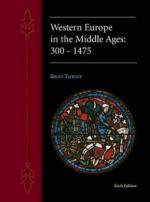|
This section contains 2,463 words (approx. 9 pages at 300 words per page) |

|
The Monastic Movement in Christianity. Monasticism developed between the fourth and fifth centuries, as the Christian Church was increasingly integrated into the world around it. The Desert Fathers such as Anthony of Egypt, the Celtic monks and missionaries such as St. Columban, and the developers of monastic guidelines such as St. Benedict of Nursia were among the early monastics who influenced the medieval tradition. During the early Middle Ages there arose a distinction between hermitical monasticism, where monks lived solitary lives, and cenobitic monasticism, where monks lived in common with other monks. Cenobitic monasticism was particularly influential in the medieval West from the ninth century, while the Greek East continued to have a strong hermetic tradition. Behind cenobitic monasticism was the idea that the act of living together might be an instrument of perfection, even as it allowed for mutual assistance, both spiritually and...
|
This section contains 2,463 words (approx. 9 pages at 300 words per page) |

|




